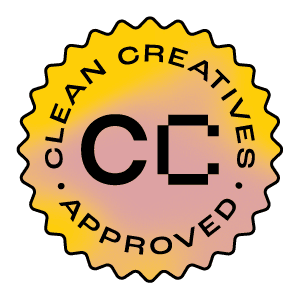
Here’s how Mightybytes supports environmental stewardship and circularity based on new B Corp performance requirements.
Environmental
Stewardship
Under new B Corp standards, Certified B Corps are expected to incorporate environmental stewardship and circularity principles into daily operations. Details on how Mightybytes complies with these new requirements are below.
New B Corp standards differ from company to company based on a variety of criteria, including company size, location, and revenue. The standards below reflect those required for a small service business with a minor environmental footprint.
With climate change intensifying and ecosystems reaching critical tipping points, businesses must fundamentally shift how they interact with nature. The Environmental Stewardship and Circularity topic challenges companies to take responsibility for their environmental footprint by prioritizing sustainable resource use, circular design, and responsible procurement practices.
— Brigitta Nemes, Senior Environmental and Governance Standards Manager, B Lab Global
1.6.1 The company defines indicators to monitor animal welfare conditions. The indicators in its monitoring process relate to how the animals are:
- raised
- transported
- slaughtered.
1.6.2 The company monitors the five freedoms of animal welfare.
1.6.3 The company creates an annual aggregate summary of animal welfare conditions:
- in the fiscal year before Year 0
- in each subsequent year.
1.6.4 The company meets any applicable laws regarding animal welfare (both general and species-specific)
Animal Welfare
As a virtual digital agency, there is no direct animal welfare risk factor in our operations.
We include company policies to prioritize more ethical suppliers or clients (see below). Should a third-party client or supplier disclose animal welfare violations that relate to our work, we will address these on a case-by-case basis.
However, this is highly unlikely since many of our clients are nonprofits, B-to-B social enterprises, associations, and educational institutions that don’t typically intersect with the agricultural sector or animal-based products.
2.6.1 The company has a process in place to assess the potential negative environmental impacts of working with potential organizational clients and projects.
2.6.2 The process sets out mitigation actions.
2.6.3 The company records how it assessed the potential negative environmental impacts of its three most material potential clients, and the outcomes of the process:
- in the fiscal year before Year 0
- annually in each subsequent year. 2.6.4
For Years 3 and 5 the company:
- records the mitigation action it took, if its assessments identified any potential or actual negative impacts
- records the effectiveness of its mitigation actions
Environmental Impacts of Client Work
Through impact business models, Mightybytes incorporates environmental stewardship and circularity principles directly into the work we do for clients. We do not typically work with clients in controversial industries.
Published in 2021, our company’s Code of Ethics includes clear statements about the types of clients we will and won’t work with (see below).
Vetting Clients
“The company seeks out projects that improve social and environmental standards, enhance quality of life, and actively contribute to a better future. We screen prospects on a case-by-case basis and regularly turn down projects that aren’t aligned with our values, including those in controversial industries like tobacco, firearms, fossil fuels, or projects that promote discrimination in any form.”
— Mightybytes Code of Ethics
Clean Creatives
We were an early signatory of the Clean Creatives pledge to not work with fossil fuel companies. The pledge now includes thousands of agencies in 60 countries.
Case Studies
Review our case studies to understand the types of projects Mightybytes pursues in its business development efforts.
Measuring Progress
Over Time
Coupled with Impact Business Models and W3C’s Web Sustainability Guidelines, Mightybytes uses our web sustainability tool Ecograder to measure how we reduce the environmental impact of client work over time.
The figures below show that there is room to improve our clients’ websites.
64
Ecograder Score
The average Ecograder score for client websites.
1.79
Emissions Estimates
Client average estimated emissions in grams per pageview
C
Digital Carbon Rating
The average Digital Carbon Rating for client websites
14
Green Hosting
14 websites for 11 of our clients use renewable energy-powered hosting
2.7.1 The company has a process in place to assess the potential negative environmental impacts of potential investments.
2.7.2 The process sets out mitigation actions.
2.7.3 The company records how it assessed the potential negative environmental impacts of its three most material potential clients, and the
outcomes of the process:
- in the fiscal year before Year 0
- annually in each subsequent year.
2.7.4 For Years 3 and 5, the company:
- records the mitigation action it took, if its assessments identified any potential or actual negative impacts
- records the effectiveness of its mitigation actions
Regenerative Finance
Shifting money toward more responsible providers is an important way to improve the business sector’s collective environmental impact. Here’s what we’re doing.
- Investments: Since the 2020 COVID-19 pandemic, Mightybytes’ primary investment strategy has been to reinvest company profits into development of our web sustainability tool Ecograder. Transitioning Ecograder from a free utility into a more robust, subscription-based technology platform can improve the performance, usability, and environmental impact of digital products and services managed by stakeholders in our business ecosystem, such as clients, other agencies, B Corps, and so on.
- Banking: The company also maintains accounts at banks with the following impact statements:
- Climate First Bank impact page
- PNC Bank Climate Risk statement
We are actively working on a company Regenerative Finance Policy and will publish that on this page once complete to track and improve upon these efforts over time.
A synergistic combination of rapid decarbonisation and additional measures aimed at reducing the use of fresh raw materials in electronic devices (e.g., lifetime extension) is paramount to prevent the growing Internet demand from exacerbating the pressure on the finite Earth’s carrying capacity.
— Nature Communications, The environmental sustainability of digital content consumption
5.1.1 The company has considered the actual and potential environmental impacts for the three most material procurement decisions:
- in the fiscal year or twelve months before Year 0
- in each subsequent year
Digital Supply Chains
As a virtual agency, third-party digital suppliers represent a significant portion of our environmental impact.
Websites and digital products typically consist of a variety of third-party APIs, plugins, widgets, analytics tracking codes, and embedded subscription services. Each one of these suppliers uses electricity and can pose potential privacy, security, and environmental risks. They are also a significant source of Scope 3 emissions. This is especially true with the rapid rise in popularity of AI tools and services.
Additionally, while we pride ourselves on producing deliverables in-house, we occasionally partner with third-party partners such as animation, graphic and UI design, data analysis, or other specialized service providers. We make every attempt to find responsible partners for these services based on our Supplier Code of Conduct.
Mightybytes also takes the following steps to mitigate actual and potential environmental impacts in procurement decisions.
Green Hosting
We look for third-party services—like web hosting—that prioritize using renewable energy.
Community
We seek out responsible suppliers in both upstream and downstream partnership decisions.
Compliance
We search for supplier sustainability statements or environmental impact policies when choosing vendors.
Purchasing
We purchase energy-efficient and refurbished equipment and recycle electronic devices.
Responsible AI Policy
Our Responsible AI Policy governs the choices Mightybytes makes around using artificial intelligence in our internal work and on client projects.
Related
Content
Finally, to help others, Mightybytes publishes articles on our blog and on B the Change, the storytelling platform for the global B Corp community. We cover important lessons learned on our social enterprise digital agency journey.
See the list below for content related to the Environmental Stewardship and Circularity impact topic.
- The Sustainable Web Design website
- Environmental Digital Responsibility
- How to Find an Ethical Marketing Agency
- Advancing Economic Digital Responsibility
- Is Your Digital Marketing Strategy at Odds with Your Climate Strategy?
- Client, Partner, and Supplier Screening Tools for Positive Impact Supply Chains
- Build a More Sustainable Marketing Stack
- How to Improve Your Digital Supply Chain
- Scope 3 Emissions in Your Digital Supply Chain
- How to Improve Your Digital Resilience
- Green Hosting archives
- Is Ethical and Sustainable AI Possible?
Still have B Corp Questions?
Want to learn more about how Mightybytes uses our B Corp certification to create positive change across communities and ecosystems? Schedule a conversation with Tim.

